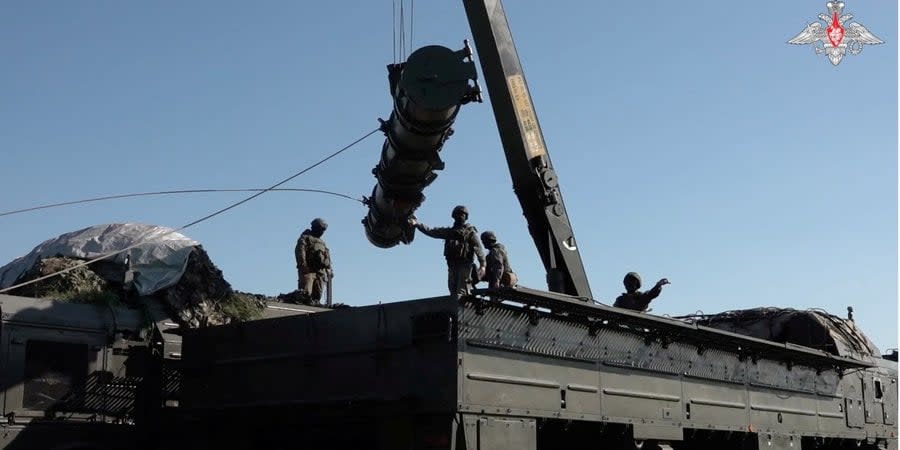Russian nuclear exercises aim to deter the West, not indicate real threat – ISW

Russian exercises to practice the "use of tactical nuclear weapons" are simple intimidation and a key element of Russia's hybrid war toolkit, the Institute for the Study of War reported.
The Russian army's Southern Military District missile units began the first stage of exercises on the use of tactical nuclear weapons, the Russian Ministry of Defense announced on May 21.
"The Kremlin is continuing its staged nuke-rattling at a time when significant political debate is taking place in the West [particularly over aid to Ukraine] — to influence Western decision-making officials," the ISW said.
Read also: Kremlin ties tactical nuclear forces drills to Western troop readiness in Ukraine
"Training and combat tasks of obtaining special ammunition for the operational-tactical missile complex Iskander" and "equipment with special combat parts of aviation means of destruction, including aeroballistic hypersonic missiles Kinzhal" with the participation of the Russian Air and Space Forces was announced by the Ministry. Preparation for these exercises was announced on May 6.
ISW points out that even one of the most famous pro-Kremlin "warners" has directly linked Russian tactical nuclear weapons training with the Kremlin's attempts to influence Western decision-making — in particular, in recent discussions about restrictions on Ukraine's use of Western weapons for strikes against the military purposes in Russia. This actually confirms their previous assessment: Russia's nuclear weapons tests are part of a campaign of "reflexive control" by the Kremlin, the Institute's analysts said. Its main goal is to threaten nuclear weapons in such a way as to achieve "self-restraint" on the part of Western officials, deterring them from taking more decisive action.
Read also: No conditions indicating possible nuclear weapon - IAEA Director General
Reflexive control is a key element of the Russian toolkit of hybrid warfare, ISW reminded.
"This is a tactic that relies on shaping the adversary's [actions] with the help of targeted rhetoric and information operations so that the adversary voluntarily engages in actions beneficial to Russia."
Russia is currently free to secure its forces on its own territory, from where the Russian military can launch missile and anti-aircraft missile strikes on the territory of Ukraine, the Ukrainian President, Volodymyr Zelenskyy said in an interview with The New York Times on May 20. Russia also has the ability to launch offensive operations with forces safely concentrated near the international border — as is the case with Russia's current limited offensive in northern Kharkiv Oblast.
ISW continues to assess that US and Western policies limiting Ukraine's ability to strike military targets in Russia seriously jeopardize Ukraine's ability to defend itself against Russia's ongoing offensive operations. This applies not only to the north of Kharkiv Oblast, but also to any area along the international border where Russian forces may decide to conduct offensive operations in the future.
Read also: Russia's strategy on Sumy front is to fix Ukrainian forces in northern border areas – ISW
Tactical nuclear weapons are nuclear munitions whose means of delivery are carriers that have a relatively low yield (compared to strategic weapons), such as a few kilotons of TNT equivalent. These may include short-range missiles, aerial bombs, torpedo warheads and other types of weapons, but not strategic intercontinental missiles [note. ed.]
We’re bringing the voice of Ukraine to the world. Support us with a one-time donation, or become a Patron!
Read the original article on The New Voice of Ukraine

